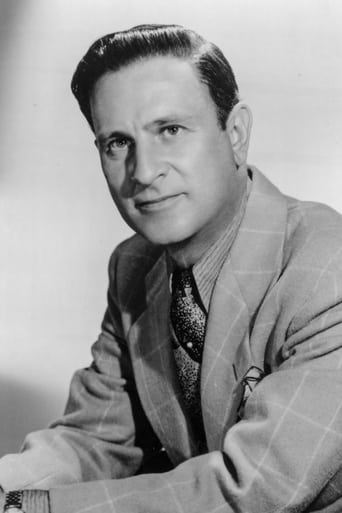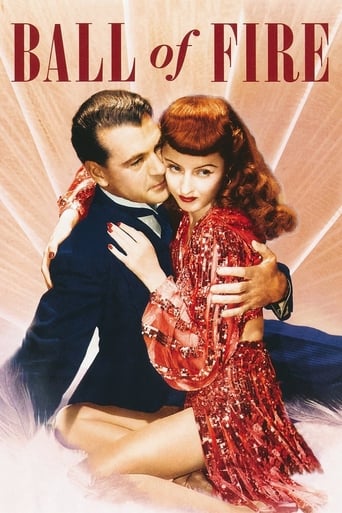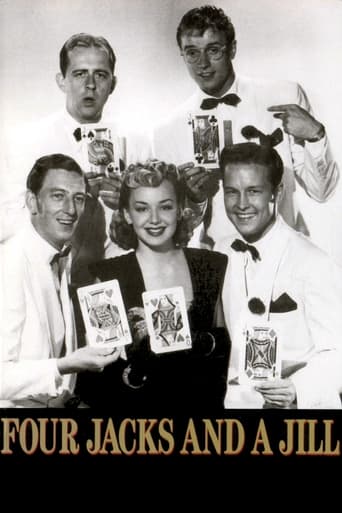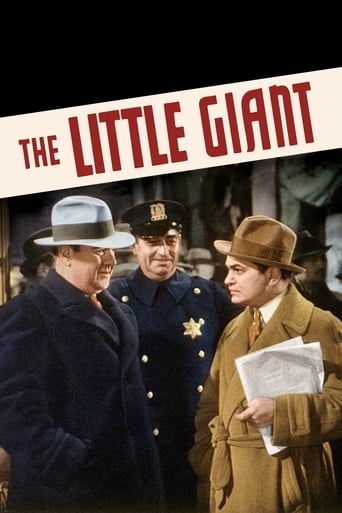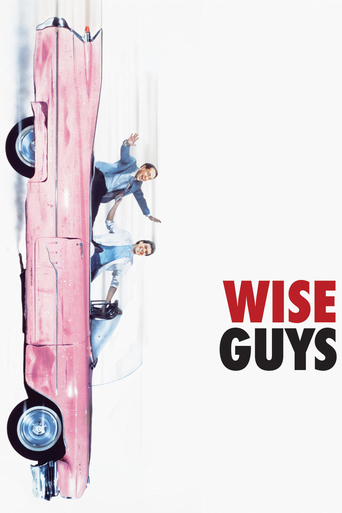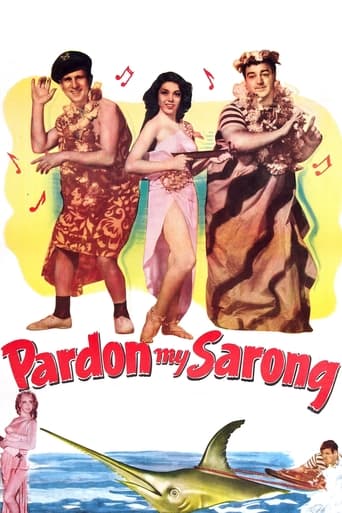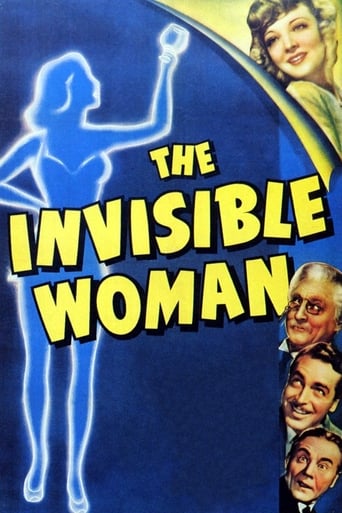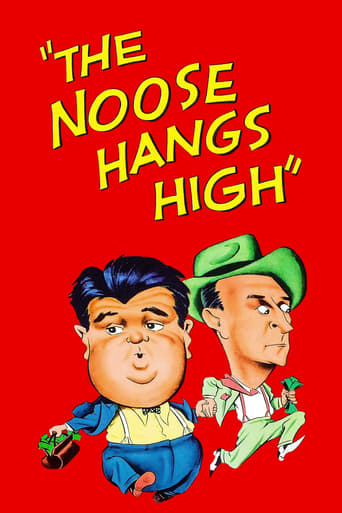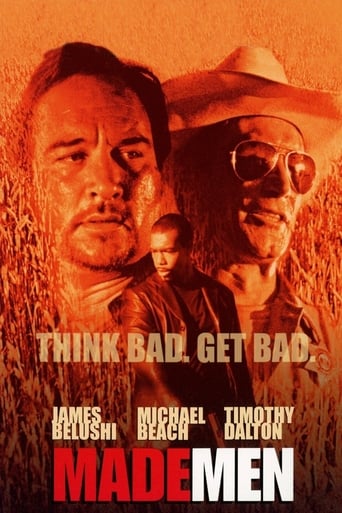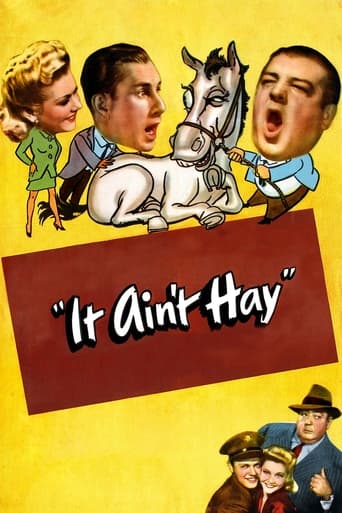
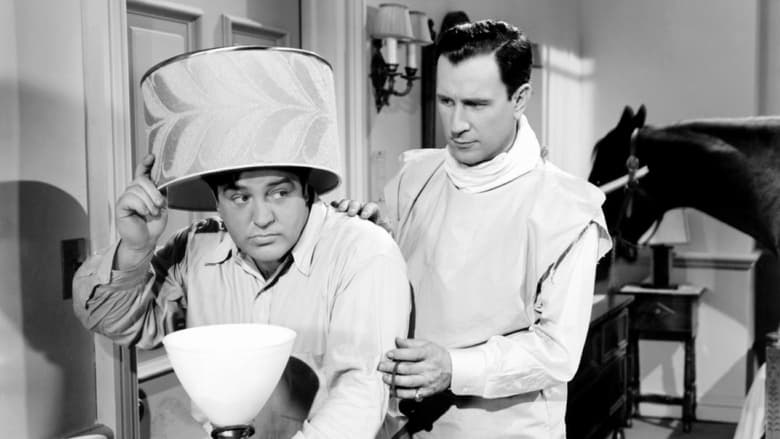
It Ain't Hay (1943)
Abbot and Costello must find a replacement for a woman's horse they accidentally killed after feeding it some candy. They head for the racetrack, find a look-a-like and take it. They do not realize that the nag is "Tea Biscuit," a champion racehorse.
Watch Trailer
Cast



Similar titles
Reviews
This is a coming of age storyline that you've seen in one form or another for decades. It takes a truly unique voice to make yet another one worth watching.
An old-fashioned movie made with new-fashioned finesse.
True to its essence, the characters remain on the same line and manage to entertain the viewer, each highlighting their own distinctive qualities or touches.
Through painfully honest and emotional moments, the movie becomes irresistibly relatable
I titled my review after the 1937 Marx Brothers musical comedy of that name, which shows certain broad resemblances to the present film. As you might guess, this Abbott and Costello(A&C) musical comedy focuses on horses, both carriage and racing breeds. It initially focuses on a particular carriage horse named Finnegan, who is attached to a carriage driven by Irishman King O'Hara(Cecil Kellaway) or his teenage daughter Peggy(or Princess)(Patsy O'Conner). Costello is a friend of this family, but he gives Finnegan a piece of his peppermint stick. A few days later, Finnegan is down feeling ill. Costello gets some 'horse pills' at the pharmacy and tries to ram one down the throat through a tube. But, before he can blow the pill in, Finnegan blows it down Costello's throat, and Costello gives up. The horse soon dies, and everyone (including Lou) blames it on the candy! Lou wants to buy the O'Haras a new horse, but has no money. So, he and friend Abbott go to loan shark: Big-Hearted Charlie, who loans them $100., but at a usurious interest rate. He suggests they gamble on the horse races to get the money to pay off his loan, and directs them to phony horse race bookies, who cheat Lou out of most of his cash. Then, Lou buys a horse on the street very cheaply, only to find that it belongs to a policeman. A trio of touts then claim that a certain horse owner is giving away an old racing horse free. So, at night, they sneak there, and take the wrong horse, since the horse names on their stalls were switched. The have trouble with a suspicious Eugene Palette, but overcome his hindrance, and make off with the horse. They don't realize they took the famous Tea Biscuit until they read in the newspaper that this horse is missing. There is a $10,000. reward for the return of this horse, which the three touts plus Palette hope to collect. The boys hide Tea Biscuit in their hotel room! Palette snooped around, but couldn't find the horse in their back room. They get by Palette, hitch the horse to a carriage, and take off for the race track. Problems on the route have Lou riding the horse when he gets to the track. The horse throws him, and he lands on another horse: Rhubarb. He runs Rhubarb in the race, even though he is apparently extraneous. Tea Biscuit, running as Rhubarb, wins. Abbott, who bet $100. on Tea Biscuit, despite his presumed absence, is resigned to his loss, and tears up his ticket. But, after it's established that Rhubarb really is Tea Biscuit, Abbott finds the pieces of his ticket and is allowed to claim his winnings. Also, Costello gets the $10,000. award for bringing Tea Biscuit back. But, there's a problem. Palette already received a check for $10,000.? as his winnings. He gave the touts an advance on that. He blames Lou for this debacle, and wants Lou to give him the money he lost. Thus, we end with Palette chasing Lou around. Palette harassed Lou throughout most of the film, showing up wherever Lou went, having new reasons to want to kill him. Palette, of course, was very charismatic, with his great girth and bull frog-like voice. Thus, he tends to dominate the scenes he's in.As in most of their early films, there is a romantic couple, here in the form of Leighton Noble and the striking blond Grace McDonald. Also, as was often the case, they served as singers for several songs. However, 13y.o. Patsy O'Connor led the singing for 2 numbers: the initial "Sunbeam Serenade", while driving her carriage, and the later "Old Timer", sung to Finnegan as he lay ill. However, the 2 main production numbers were mainly sung by others. Grace McDonald led the street-located "Glory Be", while Leighton Noble led the finale stage-bound "Hang Your Troubles on a Rainbow". Believe I saw Grace do a short tap dance in this number. She was the sister of Ray MacDonald: a professional dancer, and they used to perform singing and dancing together when young. Leighton was primarily known as a singer and orchestra leader, rather than an actor. Patsy O'Connor was the niece of Donald O'Connor, who was then costarring in a series of musical comedies for Universal....The Four Step Brothers also performed their novelty-styled tap dancing and other shenanigans in both major productions. Shemp Howard, of The Three Stooges, was one of the 3 touts. He was often present in a small role in the early A&C films.....Prolific actor Samuel Hinds served as the owner of Tea Biscuit, whose name is a slight variation of that of the famous racehorse Sea Biscuit....This film is based on Damon Runyon's story "Princess O'Hara". , first made into a film in 1935. In the present film, Peggy O'Connor played the princess.Despite it's frequent nonsensical highly contrived nature, I can recommend this film for those, especially kids, who like the boys' shtick.
Abbott and Costello are at their very best in this agreeable comedy. They play a couple of Manhattan taxi drivers with a fondness for a sweet young girl and her horse. Costello means well in trying to be nice to the animal, but his feeding it candy ultimately causes the horse to get sick - and die. So he and Abbott set out to make things right by getting a new horse for the girl, whose dad (Cecil Kellaway) runs a horse and carriage ride in the city. I know that synopsis sounds rather dramatic, but there is a lot of well-staged comedy between the serious moments. And Bud and Lou are as sharp in ever performing them. Some routines include: their classic "the horse eats his fodder", the boys getting swindled at a phony horse race outfit, Lou getting into trouble at a restaurant for not being able to pay his check, and other assorted gags. Third Stooge Shemp Howard also has a part, but the real fun comes courtesy of fat man Eugene Palette, who is the perfect foil for Costello's antics. As with almost all of A&C's movie of this period, there is some singing and dance numbers here; however, I find them to be rather entertaining and endurable this time out. *** out of ****
'Schmaltzy' can best be described by excessively sentimental--to the point where it can be seen as sickeningly sweet. Despite the very positive reviews for IT AIN'T HAY, I am very surprised that none of them see the film as an example of pure 100% bonafide schmaltz.Here is the plot--you decide whether or not it's schmaltz. A young girl (about 14) drives a horse-drawn carriage (hmm...what about child labor laws?). She adores her horse and everyone loves her--calling her "Princess". But, when Lou Costello accidentally kills the horse, the entire community is heart-broken for the poor kid...and Lou knows he must do something to buy the girl and her old granddad a new horse--otherwise, the girl will be miserable and they won't be able to pay their bills! When Lou DOES get a horse, he accidentally steals a famous race horse and gives it to Princess. But, when he learns the truth, the horse must be returned...and what is to become of this precious and precocious teen?! There's quite a bit more to the plot than this, but the bottom line is that Abbott and Costello played the sentimental card too often and the edginess of their material was missing--like it was a film just for kids or people who hate comedy. While some comedians have used schmaltz, there is a big difference between schmaltz and sentimentality. Schmaltz is when the sentimentality takes center stage and is THE substance of a comedy--and real comedy cannot be funny if there's schmaltz as the saccharine style of the film interferes with the laughs. This film simply chose sentiment over laughs again and again. One of the only really funny parts occurred at the very beginning, when Shemp Howard (a perennial in early Abbott and Costello films) is introduced.Overall, the worst film that the team made up until this point. Too much singing, too much sentimentality and a "wacky" race towards the end that instead of helping the film to finish on a high note just came off as contrived. Sorry folks, this is one "lost" film that Abbott and Costello made that just as soon could have stayed lost--barely earning a 5--and that's being rather generous.By the way, the rubber band joke at the end was a reference to WWII and rubber rationing--when rubber was as rare as could be since almost all of it was diverted to wartime use.
This film has not been restored and the Bud and Lou routines are great with perfect timing. One of their best routines are when they are by the race horse which is pulling the open carriage and Lou is briefed on the horse being a mudder and that the horse eats his fodder. The Step Brothers dancing scene is top rate and I haven't seen anything like it anywhere else. The Damon Runyon dialogue is great but because of the studios and family licensing differences, this film will pass into oblivion. What a shame this will be lost when so many would really enjoy it. The copies that are available are of such poor quality you really can't enjoy them.


